On the 18th of May 1870, a public meeting was held to discuss how best to persuade the Government to erect a bridge over either the Mersey River or Port Frederick. A committee was formed of some twenty-four individuals and included names well-known in Devonport to this day: Oldaker, Rooke, Stewart, Cummings and Best, to highlight a few. Their proposal was rejected by the Office of Lands and Works due to the large expenditure of public money that would be required and the fact that facilities were already available to those needing to cross the river.
The Committee continued with petitions, pointing out that current facilities consisted only of ferry boats for passengers and a punt for horses, cattle and carts. They drew attention to the fact that the ferry was privately owned and prohibitively expensive, while the punt was often disabled for weeks at a time, meaning no carts could cross the river, and horses and cattle had to be swum across. They also pointed out that public money had been utilized to build bridges over other rivers such as the Forth and Leven, while nothing had been done for Torquay.
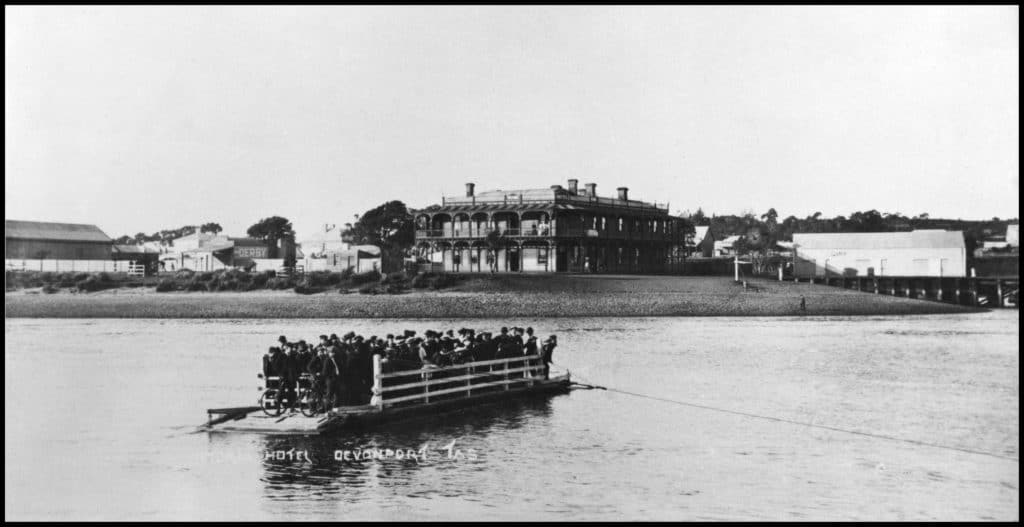
Although it seems the process of achieving the milestone of a bridge across the Mersey was not all plain sailing (if I may be allowed a pun…) the Committee eventually prevailed, and on the 24th of May 1902 the first bridge across the Mersey – Victoria Bridge – was officially opened. The day was to be one of celebration, with the ceremony taking place at 2pm, a banquet at the Victoria Hotel at 7.30pm, and a dance at the Devonport Town Hall from 8pm to 11pm. The North West Post reported after the event that the opening ceremony had taken place on a fine day with a crowd of between 200 and 300 attending, the crowd further swelled by farmers from outlying areas. Of particular interest to those who visit the Bass Strait Maritime Centre, the newspaper records there was a lavish display of bunting at the signalling station near the Marine Board house in honour of the event. Vessels in the harbour were also reported as being decked out with flags.
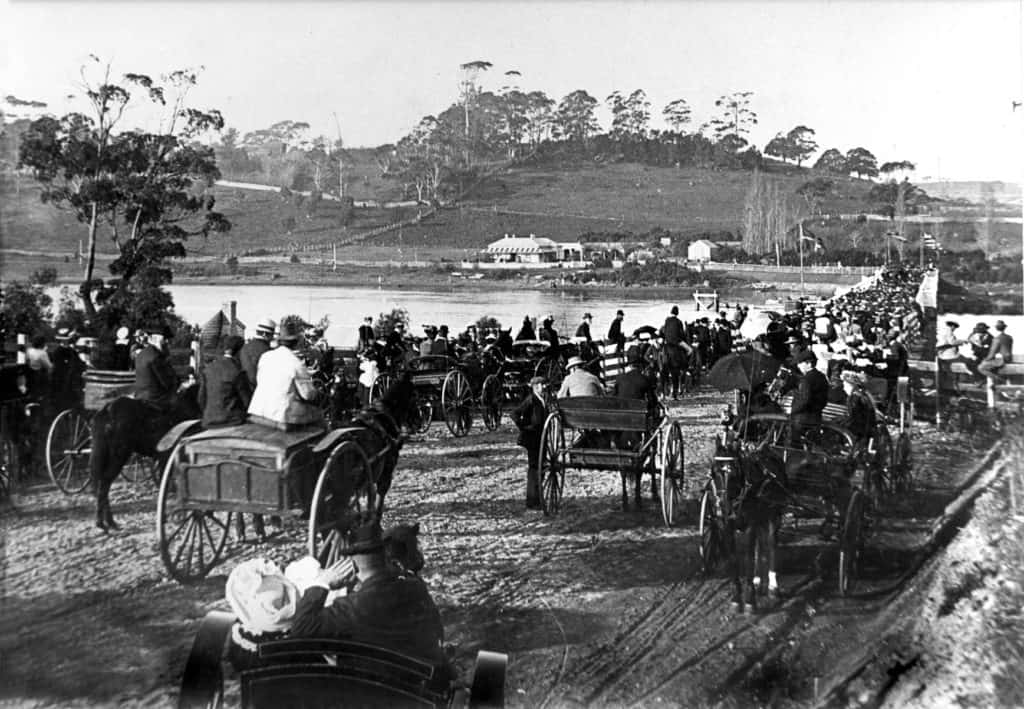
The Minister for Lands and Works, the Honourable Mr Edward Mulcahy, cut a ribbon and officially opened the bridge. A number of local dignitaries were present, among them Mr J. Luck, Chairman of the Devonport Town Board and Master D. Corker, Master Warden of the Mersey Marine Board.
Mr Mulcahy’s speech was interesting, given his Ministry’s earlier lack of interest in the project, extolling as it did Devonport’s place as a natural outlet for a large producing district, and asserting his belief that it was important to have a single first-class port in the area. This new bridge, he stated, was a step in the process of concentrating produce and being able to get it to the wharf cheaply – all those concerns, in fact, that the Committee had been highlighting during their negotiations to get the bridge built.
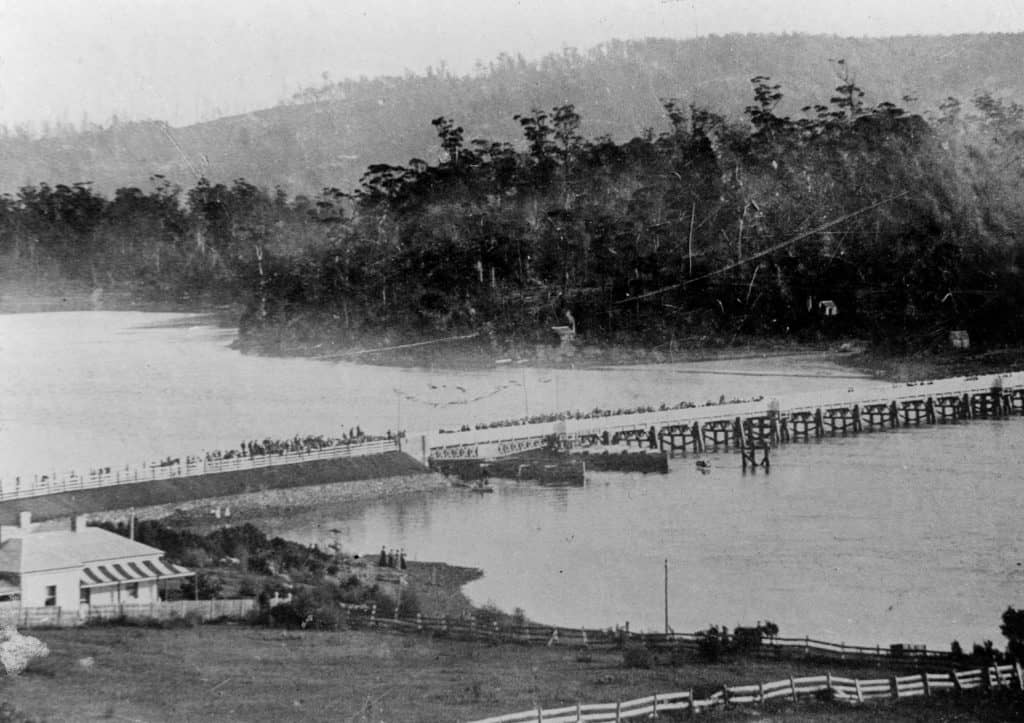
An apology was read out from the Governor, Sir A. Havelock, congratulating the people of Devonport on the completion of the bridge and expressing regret at his inability to attend. The telegram referred to the importance of the bridge, and its presence as an indicator of the progress and prosperity of Devonport.
In February 1924, the original bridge came down in a spectacular incident. Although the bridge had stone-built approaches, its piles were constructed of Tasmanian hardwood. Apparently as long ago as during its construction there were questions raised about the wisdom of using this particular wood for the bridge’s piles, as it was known to be vulnerable to teredo worm infestation.
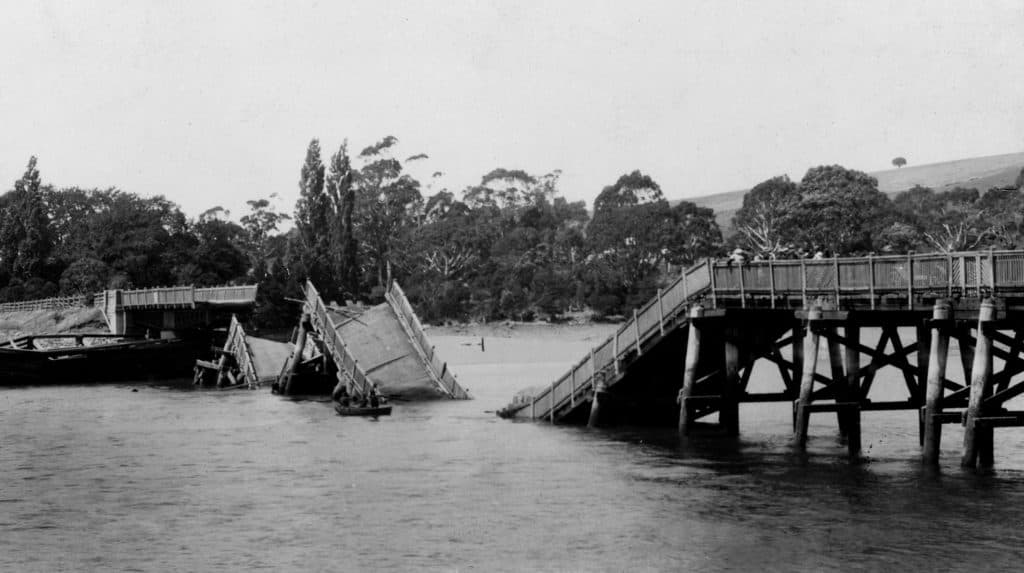
A couple of years before the collapse Diver Bishop of the Marine Board had made an examination of the piles and reported that the majority of them were riddled with teredo. Owners of heavy vehicles had been warned that the bridge was unstable, but most users thought this just related to the planking. In 1922 the Marine Board advised the Lands Department that it considered the bridge to be unsafe and two years later they were proven correct.
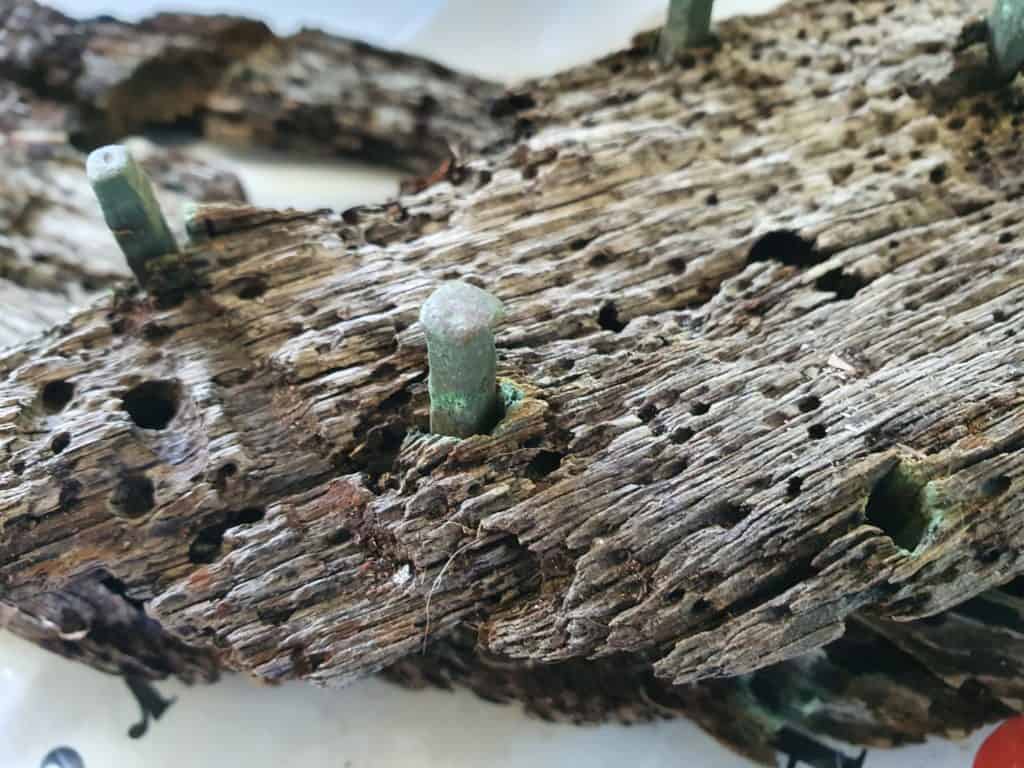
It was around 10am on a day in late February 1924 that Ted Knight and Bill Eldridge started across the bridge from the eastern side. Bill was driving their six-tonne steamer truck which was loaded with five tonnes of straw and towing a three-tonne trailer. They had made the trip hundreds of times before, and had no idea teredo worms had been making a meal of the bridge’s wooden piles. Coming the other way was ‘Plumber’ Reid, who was driving a three-horse team attached to an empty wagon. As the vehicles drew alongside each other in the middle of the bridge the horses shied at the steamer. Bill applied the brakes and Ted jumped down to help quieten the horses. There was a loud rending noise and the bridge began to tilt at the eastern end. Ted, Bill and ‘Plumber’ clambered up the sharply inclined western section of the bridge which remained attached to the shore, as the centre of the bridge collapsed into the river. They could do nothing but watch as steamer truck, trailer, wagon and horses slid into the water. Ted showed both bravery and heart: he jumped into the river and cut two of the horses free, and they were then able to swim to shore. In the meantime, a rowboat had been launched from the eastern shore, and the rowers helped Ted free the third horse that had panicked and become tangled. Ted than hitched a lift in the rowboat to get back to shore.
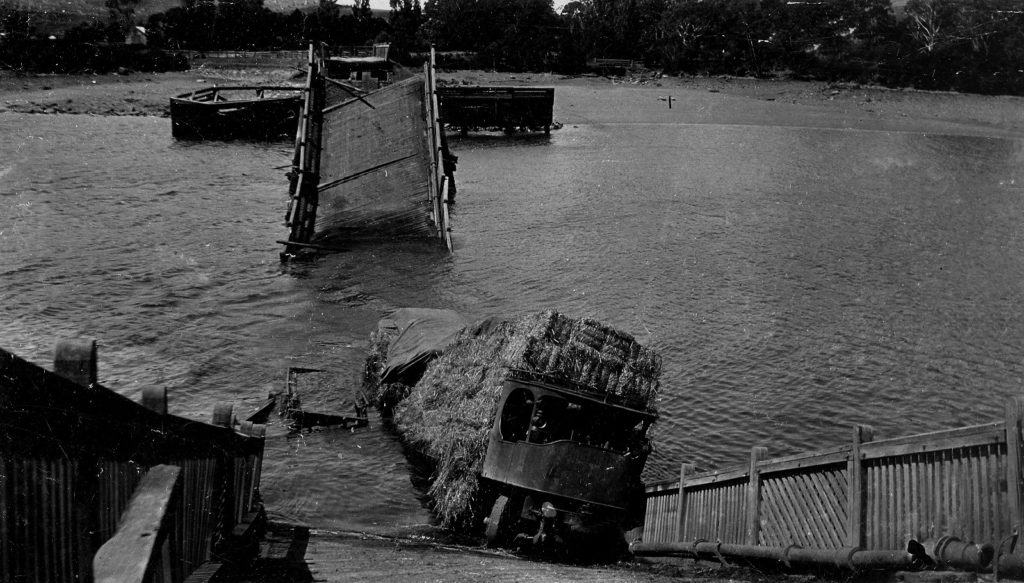
Fortunately, it was low tide at the time and the vehicles, which were not completely covered in water, were able to be recovered by the Marine Board’s floating crane. The steam truck was dried out and back in service within a couple of days, and the horses were also none the worse for their experience.
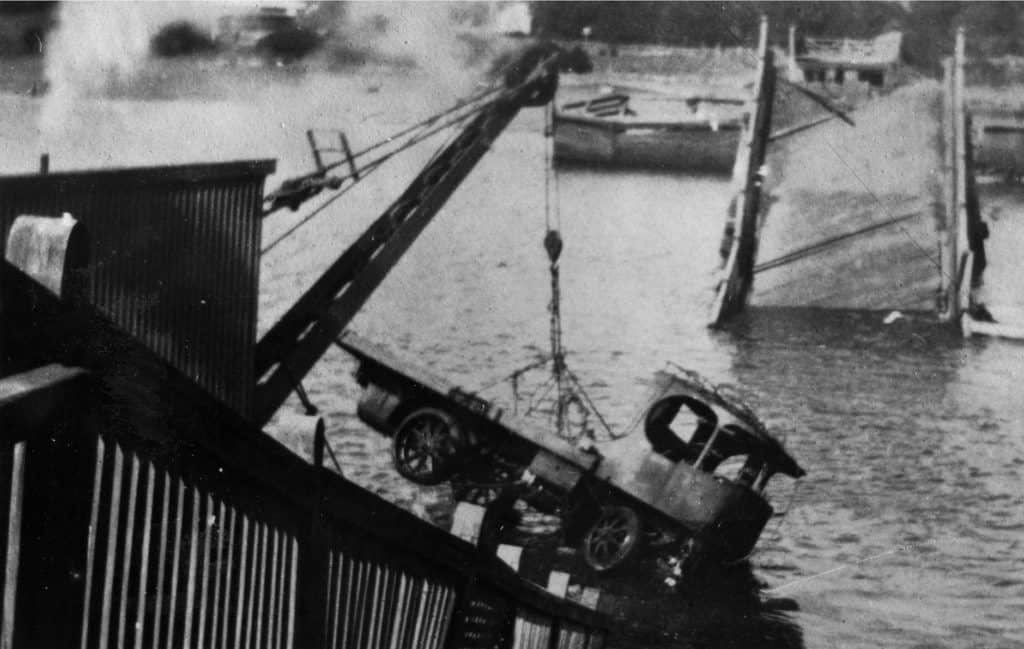
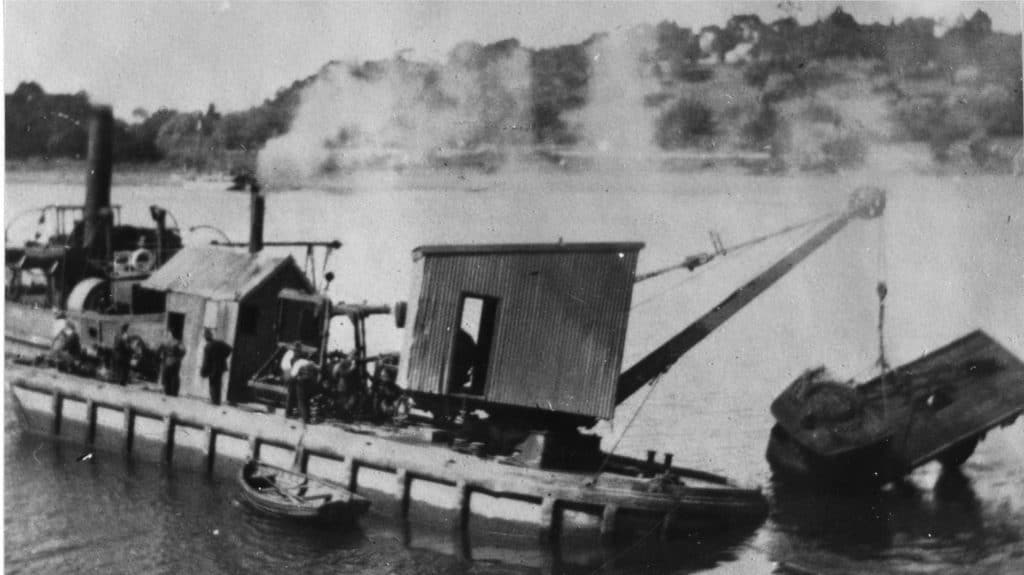
According to Ted in an interview he gave a couple of years later, he and Bill had pulled the steamer truck and trailer over to the side of the bridge when they stopped. He believed that extra weight on the edge of the bridge was what ultimately caused the collapse.
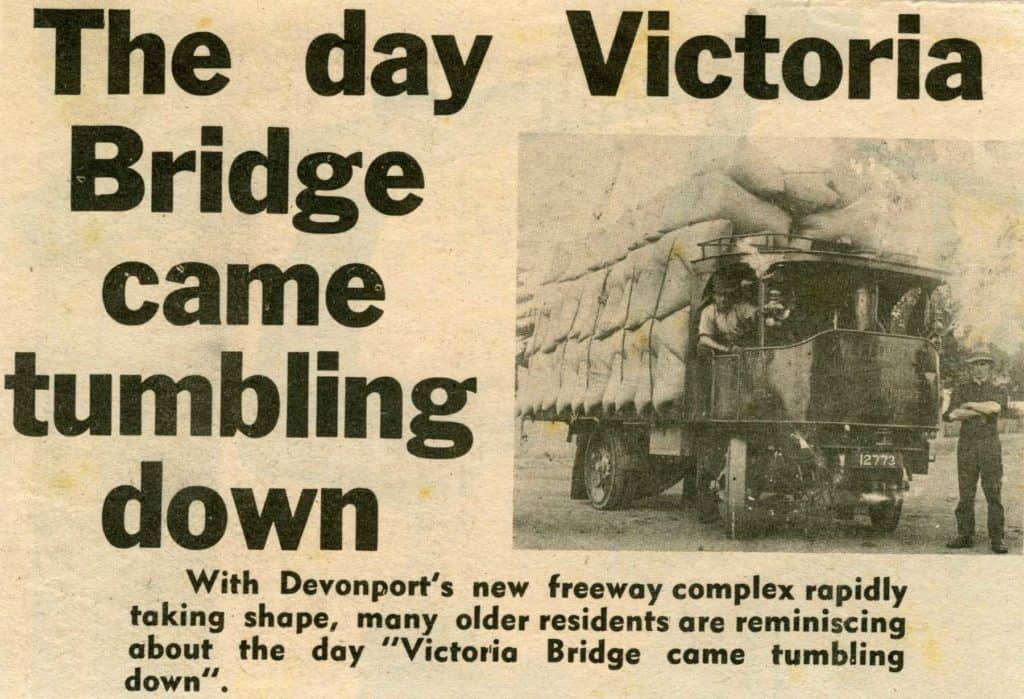
For the next three months until a temporary bridge could be built, most items that had to be transported between East and West Devonport were carted via Latrobe, an extra distance of twelve miles. A continuous ferry service was maintained during this period for goods that could be transported that way, and the East Devonport wharf was used for some shipments. The reconstructed Victoria Bridge came into use on the 11th of June 1926, with NSW turpentine wood, known to be more teredo resistant than Tasmanian timbers, being used for the piles.
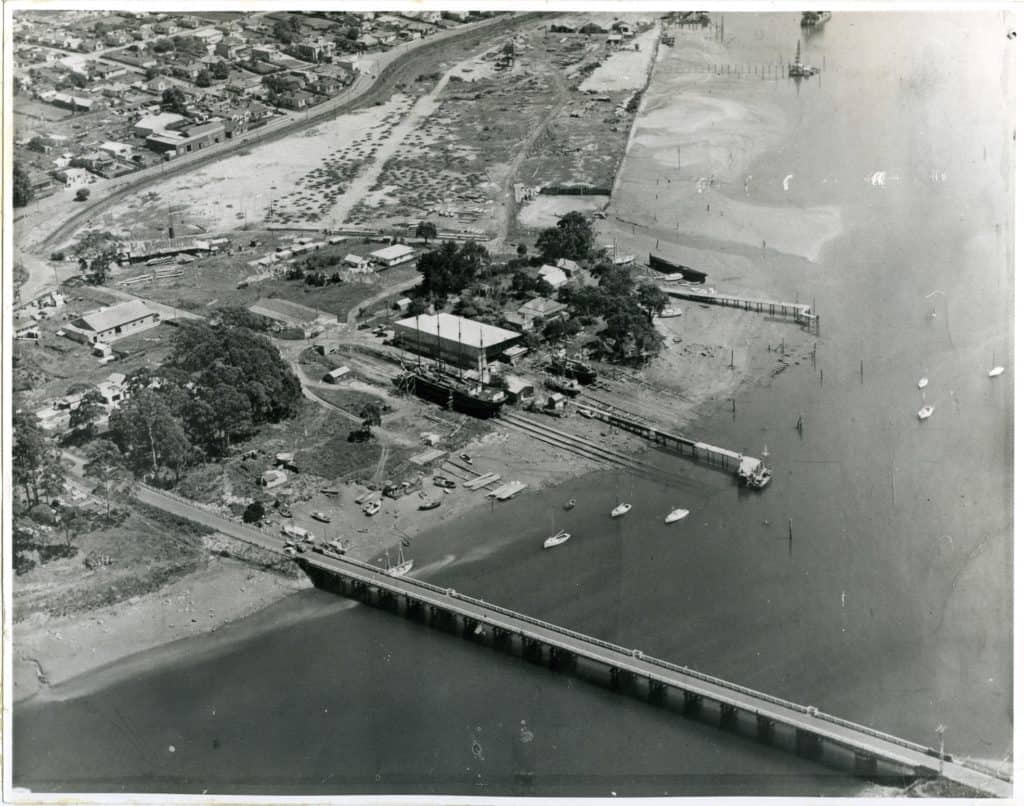
The latest, and current, bridge across the Mersey was officially opened on the 11th June 1971, with a second lane being opened on the 25th February 1995. This bridge has a superstructure of prestressed concrete with steel piles – and hopefully not a teredo worm in sight.
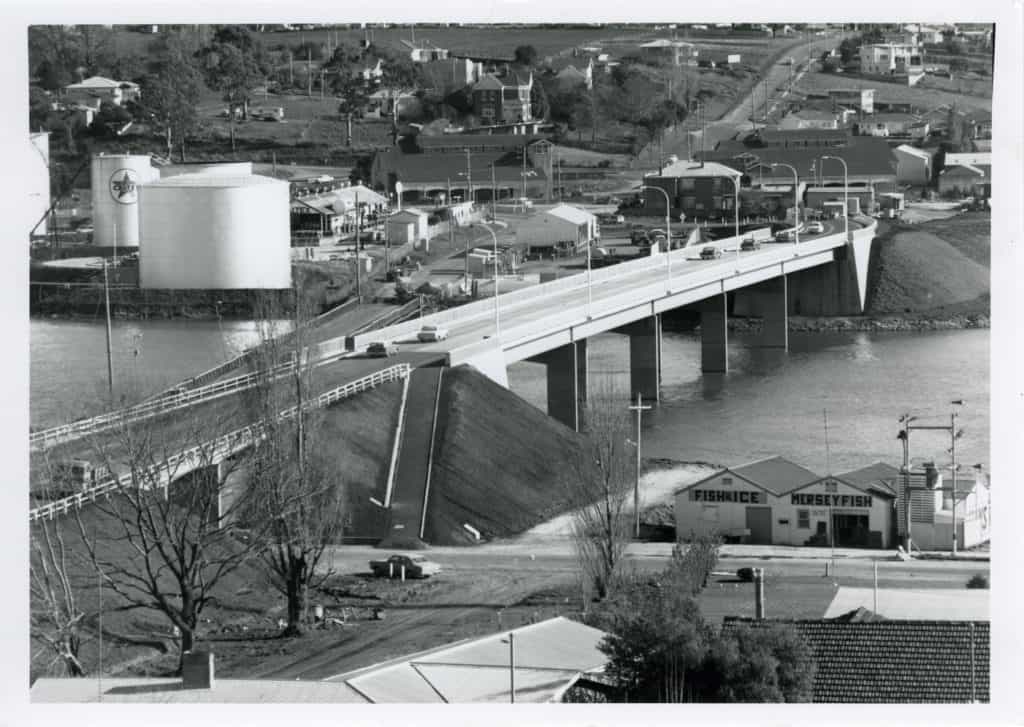
When the first section of the bridge was opened in 1971 not only was Ted Knight present, so was Mrs V. Griffin, daughter of Mr E. Mulcahy who, as Minister for Lands and Works, had opened the first bridge across the Mersey in 1902.
References
The Advocate, Saturday 28th May 1955
The Advocate, Saturday 6th August 1955, page 2
The Advocate, Sunday 3rd May 1959, page 7
The Advocate, Saturday 18th April 1970, page 5
The Advocate, Saturday 29th May 1971, page 31
The Devon News, Thursday 1st November 1962, page 12
North Western Advocate and the Emu Bay Times, Saturday 24th May 1902, page 2
North Western Advocate and the Emu Bay Times, Tuesday 27th May 1902, page 2
Tasmanian Mail, Saturday 31st May 1902, page 21
The Weekly Courier, Thursday 7th February 1924, page 28

